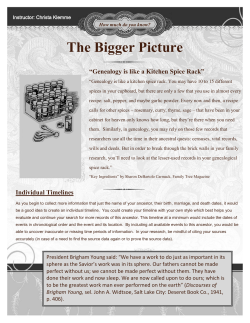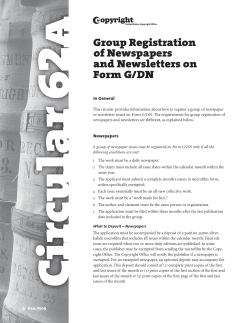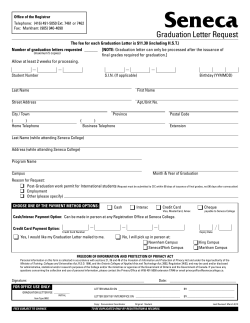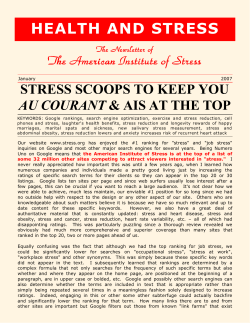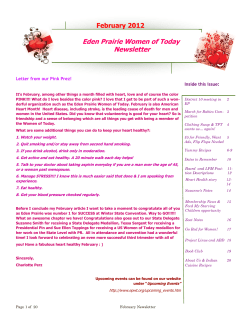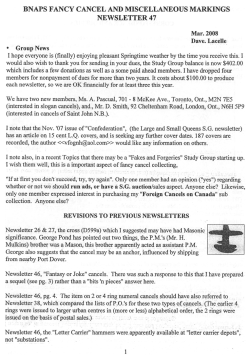
P G N
P UBLIC G OOD N EWSLETTER Engaging campus and community for the public good h Spring 2014 – Issue 20 Editor: Iman Jodeh Our mission is to educate, engage, and equip the campus community to accomplish tangible, public work that improves the lives of people in our communities. Director's Note Anne P. DePrince, Ph.D. As the Spring Quarter quickly passes, some important CCESL accomplishments stand out. As you will read in the pages of this newsletter, students in CCESL programs have actively invested in the public good – and are writing about and reflecting on their experiences. In addition, we have continued to make important strides in investing in the human capital necessary to do public good work. For example: • A team of eight faculty and staff attended an intensive community-engagement leadership training in March, The Mountain West Engagement Academy. • A team of six staff attended a leadership training on integrating civic development into co-curricular programming, Work on Purpose. • The Public Good Fund Committee awarded more than $100,000 to support faculty community-engaged scholarship. • 19 instructors took part in intensive trainings on developing service learning classes. In addition to these accomplishments, CCESL worked with faculty, staff, and administrators from across campus on a self-study of community engagement as part of DU’s application for reclassification as a Carnegie Community Engaged Campus. We are working on ways to share key findings from the self-study with you this summer. CCESL End of Year Celebration Ice Cream Social! Open to All CCESL Participants May 27, 3:30-4:30 INSIDE THIS ISSUE PA Program Sponsors “Week without Walls” for Local High School Students.................................... 2 DUSC Stays Warm and Busy During Winter Quarter ........................................................ 3 Taking Theories of Community Engagement Out of Classroom & Into Community ................................. 4 Public Achievement and Strive Prep-Smart Academy Team Up for PA Summit ......................................... 5 PG Scholar Creates a Public Web-Based Geographic Information System to Support Communal Decision Making Along Nicaragua’s Pacific Coast ........................................................... 6 DU AmeriCorps Spotlight: Corey Klein.................... 8 CCESL Puksta Scholar Awarded 2014 Newman Civic Fellows Award ................................................ 8 DU AmeriCorps Spotlight: Dan Fliegelman ............. 9 And the Award Goes To .......................................... 9 Foothills Visual and Textual Magazine Offers a Platform for Creativity to Thrive……........................10 The Road to College as a Puksta Scholar….……..11 Public Good Scholars Work Continues to Gain Momentum through Short Video……………..….….12 CCESL Community Spotlight: Tony Grampsas Youth Service Program………………………………..….….13 On behalf of CCESL, thanks for all of your contributions this year to the work that makes DU a great private university dedicated to the public good. CCESL Community Spotlight: Tony Grampsas Youth Service Program Wednesday, May 21, 3:30-4:30 See Page 13 for More Information CCESL PG Newsletter Spring 2014 Page 2 PA Program Sponsors “Week without Walls” for Local High School Students: DU students lead teens in activities centered on civic change-making By: Emily Thomas, STRIVE SMART Public Achievement Coach This year, Public Achievement (PA) formed a new partnership with STRIVE Preparatory Schools SMART Academy. We work with 170 9th grade students to develop civic projects to address social justice issues in their community. Personally, I work with two classes around the issues of gang violence and youth involvement. Recently, I had the additional opportunity to get to know students from some of the other STIVE classes during the Week Without Walls. In order to engage students inside and outside of school, STIVE administrators asked the PA program to organize a weeklong event under the supervision of CCESL’s Associate Director, Cara DiEnno. At the kick-off of the Week Without Walls, students received a Student Activity & Reflection Portfolio, which detailed each day’s schedule as well as information about speakers, documentaries, and projects while giving them space to write during activities and reflections. I came to STRIVE on the second day and participated in leading a workshop series on public narrative and preparing for service. This day was meant to give students an opportunity to develop their story of self. First the students wrote in their portfolios about a moment that stuck out to them in their lives related to their social justice issue or something else meaningful to them. Their moment was then narrowed down to one word. They each wrote their word on a name tag and wore it for the remainder of the day. The rest of the workshop included taking their one word and turning it into a story, a poem, and snapping a picture that represented their story and/or one word. The students also had time to develop mural ideas focusing on strengths they see in their community for the inschool service activities that would happen the next day. The rest of the week was just as fun. On Thursday, we met the STRIVE students at the Colorado State Capitol and spent hours with them doing activities around Capitol Hill in between tours of both the Capitol Building and the Colorado Justice Center. At the Colorado Justice Center, our tour guide pointed out all the columbines in the building’s architecture and brought the students to the Court of Appeals and the Colorado Supreme Court room. My group was really curious to learn what it took to become a lawyer or legislator. We were able to have good discussions about some educational steps they could take if they were interested in a governmental job. After the tour, some of the students came with me to view the Colorado State Constitution and I told them the story I had heard from Chancellor Coombe describing how DU (Colorado Seminary 1864) was established before the creation of the Constitution (1876) and is actually written into it. At the Capitol, the students sat in on a meeting of the House of Representatives and the Supreme Court. Their favorite part of the tour was hearing from my co-coach, Antonio Vitale, who is currently doing an internship at the State Capitol. We rounded off the week by bringing the students to DU. We played games with them on Driscoll Green in the morning, broke up into our individual class groups to further develop our civic projects, and reflected on the week before they boarded the buses to start their Spring Break. It was nice to work with our students outside of the classroom and give them an opportunity to learn about their community in multiple environments. Page 3 CCESL PG Newsletter Spring 2014 DUSC STAYS WARM AND BUSY DURING WINTER QUARTER By: Sarah Yaffe, DUSC Co-President Winter Quarter at DU is always busy and cold; however, DU Service and Change (DUSC) did not let the weather stop them from volunteering and promoting critical reflection for students. Project Action was busy heading up volunteer opportunities for students nearly every weekend. The team collaborated with the Ronald McDonald House and 10 volunteers were able to feed children who just received surgery and their families. DUSC Co-chair Neda Kikha reflected, "We had people from all majors come out and spend the morning tapping into their true chef-selves over a hearty meal with the families." There will continue to be a partnership between Ronald McDonald and DUSC to support healthcare in Colorado. Meanwhile, Project Volunteer educated DU students and alumni about food inequality in the world by collaborating with Oxfam and hosting a Hunger Banquet. The 35 participants encountered different meals depending on their income; at the end, the three income categories joined together and shared their food to prevent food inequality. Project Volunteer continued their tradition of hosting a booth at DU’s Big Event. DU hosted their sesquicentennial anniversary celebration at the Big Event. Project Volunteer hosted a pottery-smashing table and mosaic workshop. The art created will be donated to future gardens on campus to be seen for the next 150 years. DUSC reinstated Project Connect this quarter. With new co-chair, Alena Hoover, there will be new opportunities for fundraisers Spring Quarter that will reach out to new students and community partners. Finally, Project Depth was busy holding cookie decorating tables to grab students' attention on the Driscoll Bridge. In record time, Project Depth assisted in finding all 350 students, tutors for our continued partner, The Bridge Project. To learn about more volunteer opportunities or to get involved with Day of Action follow us on Facebook: https://www.facebook.com/DuServiceChange. DU Service & Change Winter Quarter Data Service Projects Facilitated: 8 Projects Community and Campus Partners: 6 Partners DU Community Members Engaged in Service: 91 DU Volunteers Hours Served by DU Community Members: 200 Hours Page 4 CCESL PG Newsletter Spring 2014 Taking theories of Community Engagement out of Classroom & into Community By: Melanie Kesner, Service Learning Associate Editor’s Note: Students and faculty interested in participating in the SLA Program should contact CCESL’s Associate Director, Cara DiEnno at cara.dienno@du.edu. Being a Service Learning Associate (SLA) for the Social Justice Living and Learning Community (LLC) is a unique experience. Three years ago, the Social Justice LLC was my entrance and welcome into the DU community. Being a part of the LLC was an incredible experience. Not only did I learn a lot about social justice, but it also changed how I learned. The ability to take things out of the classroom and into the community with the service learning aspect of the course showed me that learning doesn't only come from sitting in a classroom and following a syllabus. True learning combines theory and practice, which is one of the great strengths of service-learning. This educational value has stayed with me throughout my time at DU. I make it a point whenever possible to attend events outside of class and engage in discussions and social justice events. I also made sure to choose a study aboard program that shared this focus on experiential learning. What I love about my chance to be a SLA for the Social Justice LLC is that I am able to help firstyear students realize the unique opportunity this community and series of classes holds for them. This is my second year as a SLA and working with the social justice professor, John Tiedemann, and the program coordinator, Catherine Orsborn, to continue the creation process of the multimedium social justice newsletter. In his class this quarter, John has allowed his students to, in a sense, write the syllabus. The students had to sit down and decide what they wanted to focus on and learn about. Although many students were originally daunted by the challenge, the freedom to express their creativity resulted in the planning of many projects that will impact the community positively. For instance, one of the groups is working to get a non-gendered bathroom in the residences halls, another group is working on creating a social justice podcast, there is also one group working to recover food waste from the dining halls and distribute it to the needy in the community. These are only a few examples of the exciting projects of this class. It truly has been an amazing experience to work with and watch these students implement their learning to benefit the DU community. It is important to note that the nature of qualitative work such as this has a personal impact on all individuals involved, including the researcher. As a previous child welfare and adoption worker, I was greatly impacted by this study and my resolve to work to improve systems has been strengthened. I entered this research project thinking it would be a quick study – I would help develop the curriculum and that would be that. I very quickly came to the realization that we were tapping into an area that is sorely understudied and extremely timely in the wake of the Aurora and Sandy Hook tragedies. My conversations with colleagues in Spain provided further affirmation of the potential impact of this study and subsequent research that may evolve as a result. In this case, the effect on individuals involved goes beyond that of simply participating in a research study. Each of the parents interviewed expressed sincere gratitude to the researchers for exploring this topic and for taking the time to listen to them. They each express a sincere hope that the study will make a difference for other families who go through similar experience in the future. The number of children and their families that will ultimately benefit from this work and its offshoots is unknown at this time, yet it is perceivably significant. Page 5 CCESL PG Newsletter Spring 2014 Public Achievement and Strive Prep-Smart Academy And South High School Team Up for PA Summit By: Neda Kikhia & Emily Arasim-Darby, Public Achievement Coaches On Friday, April 11, 280 high school students from STRIVE Prep – SMART Academy and South High School visited DU for the Public Achievement (PA) Summit to experience a day as a college student by attending educational and informational workshops and campus tours. They came together to share and present on the social justice projects they are implementing in their school as part of CCESL’s Public Achievement program. The students had a chance to learn about life in college and how to build the skills to get there! Public Achievement coach, Antonio Vitale, opened the Summit with an inspirational speech about taking initiative to make change in the world. Students then attended two sessions, one in which they had the opportunity to take campus tours, learn more about the University’s admission and financial aid processes, step outside for some awesome physics demos, and so much more! Students were also able to attend a Q&A with DU Faculty and learn about student life at DU through a student panel. The students really pushed their boundaries and knowledge of themselves through other workshops. One workshop focused on challenges in leadership where they had to make do with objects provided to them and challenged to build a structure and through activities that where geared toward self-expression and identity. The whole day was tailored to answering questions about college while keeping social justice prevalent, and the day also made college seem more realistic and welcoming. After lunch, students took the stage, presenting to their fellow youth about the impact their projects intend to have. They are in the process of completing their projects, but the themes, passions and focus for change, center on the stigmas of tattoos and piercings in the workplace, to teen homelessness in Denver, immigration issues, bullying in their schools, and more. The day ended with a celebration of their achievements. For students and the CCESL staff alike, it was a day for inspiration and community building. Public Good Scholar Creates a Public Web- Page 6 CCESL PG Newsletter Spring 2014 Based Geographic Information System to Support Communal Decision Making along Nicaragua’s Pacific Coast By: Matthew Taylor, Ph.D., Department of Geography Editor’s Note: Faculty interested in participating in the Public Good Program should contact CCESL’s Associate Director, Cara DiEnno at cara.dienno@du.edu or check our website for application deadlines. As part of a project supported by the Public Good Fund, we set out to provide all actors along the Tola region of the Pacific Coast of Nicaragua with equal access to information which they can use to make decisions about their future. Development in this region is moving at a rapid pace. The pace and direction of development is determined by the actors with power and information. Provision of vital information (environmental and social) in an easily accessible format (spatially represented in the format of maps on the web) helps overcome gaps in information and provides "weaker" actors with information upon which to participate in community meetings on an equal footing and also to determine their own futures. We reached out to three non-governmental organizations with whom we have worked since 2006. After consultation, we worked closely with Project Waves of Optimism (Project WOO) to help them design a Geographic Information Systems (GIS) that they are using to collect and analyze both human and environmental data as they launch their new health clinic. This is a very rural area and WOO, after doing preliminary analysis with data we provided to see how far locals were travelling to access healthcare, decided to build the clinic in the village of Gigante. We have worked closely with them to design a web-based GIS that includes basic environmental variables such as river and well locations, and more human information such as roads, paths, schools, crop coverage, etc. We have also worked with health providers in the clinic to provide a "closed" side to the GIS where they can track personal information about patients to the clinic. In March this year we travelled to Gigante to demonstrate the system to health clinic employees and volunteers to finalize the system before going live by June 2014. This visit included training on the system so that it is truly sustainable and does not rely on "expert knowledge" so that users can input their own data and conduct their own analyses. For example, while we were with WOO in March, we conducted very basic analyses examining the relationship between the locations of a recent dengue fever outbreak (mosquito born disease with CCESL PG Newsletter Spring 2014 Page 7 Continued from page 5 no cure) and environmental variables. A visiting volunteer medical doctor from Canada, Dr. Lane, was very impressed by the power of both the public and private sides of the system. Now that we have provided an extensive set of "baseline" data that is available to the world, we can now work with other NGOs in the area, such as FUNLIMON and PRE, to create a system that is specific to their needs and the needs of their communities. Initially, this work can be done by students in our Master of Science in GIS program before transfer to the users. We will launch the final version of the WOO website before June 2014. The world will then be provided with the link to this site. This work has been very well received by communities and NGOs in rural Nicaragua. This continued presence of DU students and faculty in the area continues our tight relationships with these organizations and the people they serve. This work, indirectly, has generated “money" in the form of internships. For example, Catherine Evanilla, a Korbel MA student, is currently working with the NGO FUNLIMON to create a micro finance program. This work creates a very positive impression about DU in the area and we are well received by all actors in the region – individuals, NGOs, government organizations, and also private institutions. Our "media" will come in the form of the website link once it is launched. Publications on the utility of public GIS for the common good will come after we track the use and utility of the website over a period of one year after launch. All of this work leads to the creation of a DU campus in Nicaragua. We have secured the donation of a piece of land from the owners of FUNLIMON and are now working closely with a DU Board of Trustees Member (Otto Tschudi) to generate funds to build the remote campus. He has a link to one of the NGOs in the area – PRE (founded by a Norwegian DU ski team member). Otto was a member of DUs ski team and is also Norwegian and is always looking for ways to increase opportunities for DU students abroad. He is also an enthusiastic proponent of dedicating time to education related endeavors, which is exactly what DU alums, Espen Haugen (of PRE) and Mike Ford (of FUNLIMON) are doing in Nicaragua. Stories like the use of Unmanned Ariel Vehicles in Nicaragua results directly and indirectly from public good funding and is another example of "outcomes" - one of the outcomes that never makes it into a proposal. But, I suppose it is a story of one thing leads to another. Moreover, the use of the UAV there will not stop. We will continue learning what is capable of with the intent of improving local lives. This was indeed a take on service learning with a huge amount of fun involved. I will teach another INTERNATIONAL Service Learning class there in December through the office of internationalization. CCESL PG Newsletter Spring 2014 Page 8 DU AmeriCorps Member Spotlight: Corey Klein Focus Area: Healthy Futures; Placement Site: African Community Center By: Jessica Hathaway, MSW Intern/Service Initiatives Program Assistant This quarter, we are pleased to feature Corey Klein as one of our outstanding AmeriCorps members. Corey, a first-year student in the Masters of International Disaster Psychology program in the Graduate School of Professional Psychology, is currently completing her AmeriCorps placement at the African Community Center in Denver, CO. In her placement at the African Community Center, which is a Refugee Resettlement Agency, Corey is a Case Management Intern. In this role, she works with one of the case managers and assists with all aspects of refugee resettlement including tasks such as airport pick-ups, enrolling in ESL classes, and completing paperwork involved in the process. Of her placement, Corey notes that, “Every day at ACC is different, so I really enjoy the variety. Plus many employees came to the United States as refugees, so I love being able to get to know their stories of how they came here, and then see them interact and relate with new refugees, proving to them that a positive transition is possible.” An important component of AmeriCorps service is the commitment to go beyond simply volunteering in the community and instead, engage in service that is meaningful and allows for growth of communities. Corey notes that her “AmeriCorps service in particular has impacted her in a powerful way; specifically in the sense of opening my eyes to diversity and the experiences of refugees when they come to this country. I am grateful for the ability to help them in a variety of ways and to hopefully ease some of the burdens of coming to a brand new country.” By engaging in this work, Corey has been able to create friendships “with refugees with from around the world – from Colombia to Nepal and Bhutan, to Somalia.” Upon completing her Masters of International Disaster Psychology, Corey hopes to travel abroad to work. Corey hopes to one day train mental health professionals as well as work directly with refugee populations, possibly as a consultant/trainer both domestically and internationally. Corey is incredibly passionate about social justice issues of women’s rights and child welfare and feels drawn to working with refugees who have been affected by sexual violence. We thank Corey for the incredible dedication she has demonstrated in her AmeriCorps service! CCESL PA Coach Scholar awarded 2014 Newman Civic Fellows Award Arimus T. Wells is the 2014 Newman Civic Fellow Award recipient from DU. Arimus serves as a Public Achievement coach to local high school students, creating opportunities for those students to create, develop, and implement civic projects in their community. Additionally, Arimus serves as a Literacy Tutor to 1st-3rd grade students and was recently selected for a university-wide Outstanding Student Award as a first-year student. Arimus is a conscientious, hardworking student who others view as a leader and with whom they are eager to learn. In addition to his deep commitment to students and his strong presence as a role model and leader for peers, Arimus is involved in numerous other programs that connect the university and community. To name only a few, he serves as the Secretary of Community Partnerships for the Undergraduate Student Government, co-chair of the University Programming Support committee of the DU Programming Board, and Assistant Coordinator for the university's Excelling Leaders Institute. Arimus will undoubtedly continue to make an impact on making the world a more equitable and just place well into the future. CCESL PG Newsletter Spring 2014 Page 9 DU AmeriCorps Member Spotlight: Dan Fliegelman Focus Area: Education; Placement Site: Denver South High School By: Jessica Hathaway, MSW Intern/Service Initiatives Program Assistant As a DU AmeriCorps Member, Dan Fliegelman began serving at Denver South High School this past fall through the Teacher Education Program at DU. Dan, who is from Huntington, New York, is currently working towards his Master of Arts in the Teacher Education Program. At Denver South High School, Dan serves as a Student Teacher in the Social Studies department and teaches U.S. History and Geography. A central component of AmeriCorps service is the commitment to community that AmeriCorps members often bring to their placement sites through awareness of social justice issues, a commitment to value added professional development, and a passion to work with people in meaningful ways. In reflecting on this component of his service, Dan notes that being an active community member means being a person that is “actively working to make their community a better place to live.” In the time that Dan has spent in Denver, he notes that he has “truly developed a love for this city” and he enjoys serving and working in ways that allow him to be involved in supporting this community as it relates to the students he works with. Outside of the Teacher Education Program, Dan also enjoys music and skiing. In his future career goals, Dan strives to continue teaching. Thank you, Dan, for your incredible dedication both in the Denver community and in your service as an AmeriCorps member! DU AmeriCorps member Jennifer Paz Awarded Excellence in Service Jennifer Paz, a DU AmeriCoprs member, was awarded the Excellence in AmeriCorps Service Award. The Excellence in AmeriCorps Service Award recognizes an AmeriCorps Member at a Campus Compact of the Mountain West (CCMW) campus who demonstrates exemplary campus and community leadership and compelling personal, professional, and academic growth as a result of her or his AmeriCorps service. The award also recognized their positive impacts in local communities through engaged teaching, research, service, and learning. On May 1, 2014 CCMW recognized the winners of the first-ever regional awards during CCMW’s 20th Anniversary Celebration and brunch at DU. CCMW honored the outstanding contributions of awardees selected through a competitive, peer review process and from entries across three Mountain West states. CCESL PG Newsletter Spring 2014 Page 10 Foothills Visual and Textual Magazine offers A Platform for Creativity to Thrive By: Anita Balakrishnan, Former Public Achievement Coach Foothills Visual and Textual magazine is a student-run publication that brings together 14 editors and as many as 50 yearly contributors to publish submissions of visual art, poetry and prose from students in the undergraduate community. As we celebrate our upcoming spring issue, “Then and Now,” we wanted to share our vision for art as a thriving facet of the DU learning environment by explaining our mission statement: At Foothills we recognize the vitality that art brings to a community and strive to showcase high-quality and innovative works produced by DU undergraduate students. If your life has been touched by art, you know this ‘vitality.’ But empirical evidence has also increasingly shown how art can build connections in community development. In 2000, Denver sociologist Seana S. Lowe studied the impact of art in gathering places for low income communities, such as Showtime Public Library and La Raza Elementary School. She found: 1. That art allowed community members to “take place in collective meanings;” 2. That the art served as a catalyst for solidarity, collective identity, relationship building, self-esteem, support, self-awareness, and common concerns; 3. “Out of these findings, community art emerges as a distinct sociological experience capable of transforming social realms.” Other communities have found similar success in the freedom of creativity. Studies have found that art and poetry can regenerate a community after tragedy. Vincent Van Gogh wrote, “Great things are not done by impulse, but by a series of small things brought together.” At Foothills, our hope is that bringing together a series of small but outstanding works from the community will result in a whole greater than its parts – specifically, one that welcomes and empowers our readers to take place in collective meanings. Most recently, we held a poetry reading at Beans Coffee shop where listeners could share and appreciate art from the DU community. If you are interested in reading, writing or collaborating, please contact Editor-in-chief Camilla Sterne. Suggested continued reading: • “When Words Arrive: a qualitative study of poetry as a community development tool,” by Sandra D. Sjollema and Jill Hanley in Community Development Journal, Volume 4 Issue 1, pgs. 54-68. • “Art and community development: the role the arts have in regenerating communities” by Alan Kay in Community Development Journal, Volume 35 Issue 4, pgs. 414-424. • “Creating Community: Art for Community Development,” by Seana S. Lowe, Journal of Contemporary Ethnography, Volume 29, No. 3, pgs. 357-386. CCESL PG Newsletter Spring 2014 Page 11 The Road to College as a Puksta Scholar By: Mawukle Yebuah, Puksta Scholar My passion for higher education access for black males started when I was a senior in high school. I was making the decision on what college I was going to attend and unfortunately, while this would have seemed like one of the happiest moments of my life, it was actually one of the most disappointing. This was around the same time when I found out that some of my black friends were not going to college and I began to notice all the obstacles that many black students and other minority students face when it comes to attending an institution of higher education. For me, this situation was very hard to understand because I always thought that everyone had the same opportunities when it came to getting a college education. Shortly after that time, I began to feel somewhat disconnected from my friends because I had this feeling that our lives were going in two different directions, and I felt that there was nothing I could do to help them. Now, when I look at the process that took me to get to college I realize that the scholarship that I received from the Puksta Scholars program is one of the main reasons why I am even in college and specifically at DU. The Puksta program has really helped to give me the tools and the support I needed to really chase my passion and strive to make a difference for many black students. One of the main parts of our Puksta program is our projects and currently my project is working with higher education access for black males. I chose this project because the demographic of black males is a group that I identify myself as and the social justice issue area is one that I can connect to many of the experiences that I have had in my life. During my first year, I really had no idea how to start my project and I learned that if you really want to make change you have to talk to the people who you are trying to help and then you find out what they view as the underline problem. So in my first year, I went to South High School every Friday and I mentored a few of the black males. My experience with these males taught me so much about my issue area and it also taught me that there are so many problems that have to be tackled in order to see the type of change that we are all dreaming about. Another part of my project during my first year came when I got the opportunity to sit on the planning committee for the Black Male Initiative Summit (BMIS). My involvement with BMIS gave me the chance to come into contact with more black males and it helped me to actually have a part of a program that was specifically geared toward my social justice area. While I learned so many things in that first year with BMIS I also knew that there were a few ways that the program could be expanded and improved. So now, during my second year of college, I have been able to work with BMIS to really expand the program. We have added a second day to the annual summit that is held on DU’s campus and we have begun to develop partner school relationships. By adding the second day to the summit we are now able to teach the students and their family what types of questions they should ask colleges and why it is important to actually visit colleges. I felt that it was important for us to develop this part of the program because I had noticed that many of the black males that I mentored never actually went to visit the campus that they were going to attend. CCESL PG Newsletter Spring 2014 Page 12 Continued from page 9 This meant that many of them were unaware of the resources on their college campuses. Additionally, we needed to start developing partner school relationships because this would allow us to have more time with the black males and it would also give us a chance to start our scholars program so that now we can follow the males from eighth grade up to their high school graduation. Along with BMIS, during my second year I have been fortunate to be part of the planning committee for the Colorado Black Student Leadership Conference (CBSLC). This opportunity came at a perfect time for me because it was a time when I started questioning if getting black students into college was enough. I was struggling with the idea of how to address the issue of not only getting black students to college but actually helping them to make sure that they graduate. I believe that CBSLC allowed us to take a step in addressing that issue. The conference, which was completely planned by DU students and the supervision of our advisor Tracey Peters, brought together blacks students from many campuses in Colorado to really help them develop the tools they needed to be successful on their campuses and even after college. One interesting fact I liked about CBSLC was that was the first time that DU has ever held any type of conference centered on black students and the fact that it was during our 150th anniversary showed how far our school has really come in being more inclusively excellent. Overall, CBSLC was such a successful event that we are hosting for a second year on DU’s campus. Finally, when I was asked to reflect on all the experiences that I have been able to have in the past two years, I come to the realization that being a Puksta Scholar has allowed me to grow and chase my passion and really develop the mindset of trying to develop sustainable change, which I know is something I will have even after college. Public Good Scholars Work Continues to Gain Momentum through Short Video One of CCESL’s funded projects this year is engaging DU and international students in translating free, open content, textbooks into Spanish. The books are available for free over the Internet, targeted at university students in countries where the lack of affordable high quality textbooks are a barrier to students receiving the education they need to help contribute to their country’s well-being. The project is being run by student volunteers under the overall management of Professors Don McCubbrey (Business Information and Analytics) and Zulema Lopez (Languages and Literature). Click here to view the video for more background on this exciting project. CCESL PG Newsletter Spring 2014 Page 13 CCESL PG Newsletter Spring 2014 Page 14 CCESL Staff Anne P. DePrince, PhD Director adeprinc@du.edu Cara DiEnno, PhD Associate Director cara.dienno@du.edu Ryan Hanschen Program Coordinator ryan.hanschen@du.edu Iman Jodeh, MPA PG Newsletter Editor iman.jodeh@du.edu Stop by to say hello... Monday – Friday 9:00am to 4:00pm Driscoll Student Center South Suites 6, 18, and 22 Did you Know… CCESL Staff Present at Youth mentoring Symposium Ryan Hanschen, CCESL’s Program Coordinator and Jessica Hathaway, CCESL’s Graduate Student Intern, presented at the Youth mentoring Symposium on April 1. The session titled “Using a Community Organizing Framework to Build Relationships and an Awareness of Identity,” presented the mentoring/tutoring program using a community organizing framework to train and equip mentors/tutors to build relationships, examine root causes, and explore their own identities. Mentors/tutors were taught how to more effectively engage youth by understanding their own identities as they relate to the communities they are serving. This interactive presentation focused on select principles of community organizing, including identity, self-interest, and relationship building, as well as specific skills and tools that will deepen mentoring practices. Congratulations to the 2014 CCESL Award Winners We are pleased to recognize and celebrate the achievements of the following community-engaged students, faculty and staff at the 2014 Pioneer Awards Ceremony: Student Public Good Award: Brittany Morris, Puksta Scholar Student Community Organizer of the Year: Olivia Hunte, Public Achievement Team Lead AmeriCorps Student of the Year: Maritza Torres Kimmy Foundation Community Service Professional Award: Emily Bowman & Maddie Spillman Department of the Year: Knoebel School of Hospitality Management Service Learning Faculty of the Year: Neil Gowensmith, PhD, Graduate School of Professional Psychology Public Good Faculty of the Year: Kim Bender, PhD, Graduate School of Social Work
© Copyright 2025










